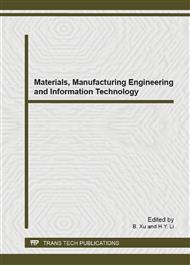p.35
p.40
p.44
p.48
p.53
p.57
p.61
p.65
p.70
Preparation and Analyzing Character of Chitosan Block in Fluffy Meshwork Shape Formed from Chitosan Fine Hair
Abstract:
Depending on available theory and literature about chitosan (CS), the paper studied the method of preparation of CS block in fluffy meshwork shape with fine hair shape and analysis its structure to adapt to application for drug controlled-release material. Primarily, CS was extruded to fine fair fiber by spinning after preparing CS solution. CS Block with reticulate structure design were carried out in this experiment. This research will be showed how to choose appropriate molding process, through selecting CS solution concentration and extruding spinning to prepare pure CS fluffy network with fine hair. The CS reticulate body obtained showed good degradation characteristics in simulated body fluid (SBF). The change of morphology to describe its biological characteristics is not only related to material composition but also to the structure of the fluffy network which is mainly controlled by the molding process. Also, the microstructure, morphology and crystallinity of the net CS hydrogels were characterized through Fourier transform infrared spectroscopy and scanning electron microscopy. This research should provide the theory basis and technical way to design and fabricate for CS as the carrier of the drug release.
Info:
Periodical:
Pages:
53-56
Citation:
Online since:
March 2014
Authors:
Price:
Сopyright:
© 2014 Trans Tech Publications Ltd. All Rights Reserved
Share:
Citation:


